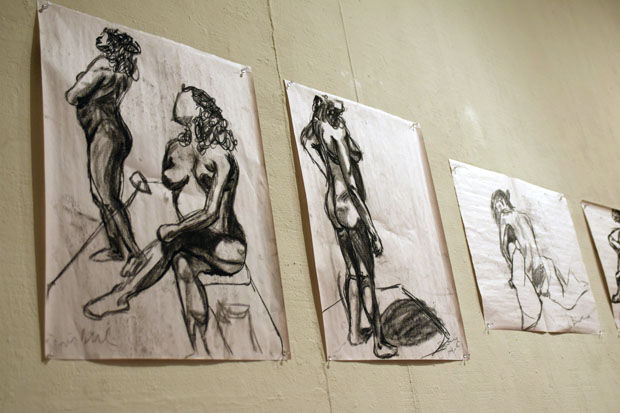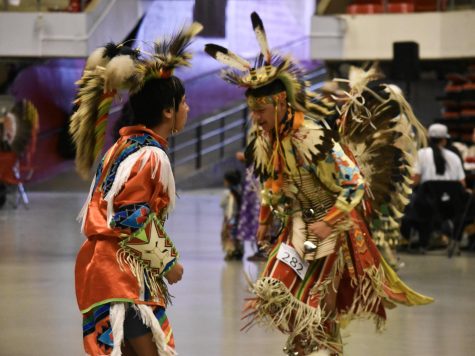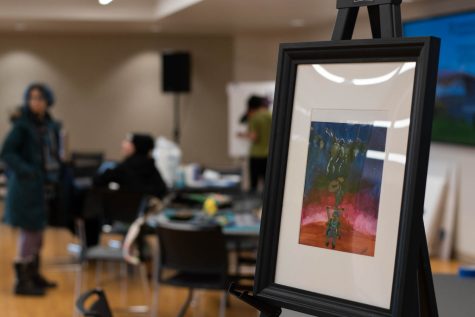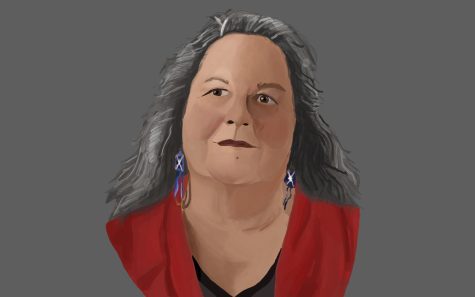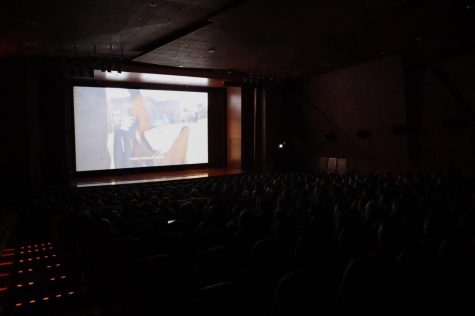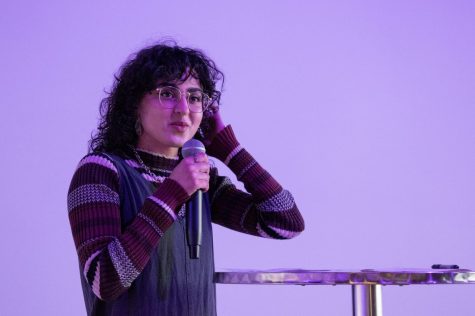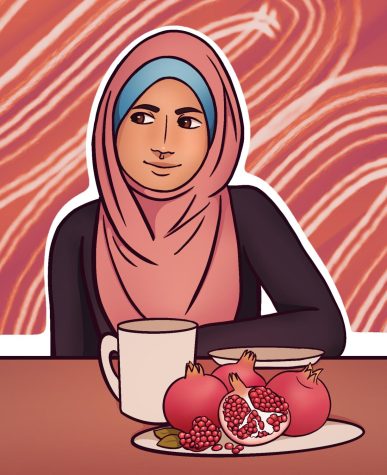Evening art class lets students sketch nude models
Sketches done by students who attended the live model open drawing sessions that took place last semester hang in the Fine Arts Gallery Two, as seen on Tuesday, Jan. 13, 2015.
January 14, 2015
In the Fine Arts Building Gallery Two hang sketches of the human form. The figures vary from angular and awkward to rested and relaxed, and students who challenged themselves to draw from life created all of them. From 5 to 7 p.m. on Thursdays, a live model poses for WSU students in the Fine Arts Building drawing studio 7024.
Jade Lowder, second-year MFA graduate student, said the sessions are free to anyone who wants to come in and work independently. He said working from a live model is a challenging and reflective experience.
“In a lot of ways, you’re drawing yourself,” Lowder said.
In the fall of 2013, Lowder worked with Thom Brown, Fine Arts Department Chair, to bring free live model sessions to campus. Lowder said he drew from live models often during his undergrad and noticed it was missing from the available arts curriculum at WSU. Having to render a 15-second pose means acting on sight instead of thinking through every line drawn, he said.
“It’s the most honest thing about making art, is working from the human form,” Lowder said.
Laura Abbott, a senior studying neuroscience and English, is one of the nude models who pose for the Thursday drawing sessions. The class usually starts with several 15 to 30-second poses, then 10-minute poses, and finishing with 20 to 30-minute poses for the last hour. Coming up with a new pose every 15 seconds 20 times in a row is a challenge, Abbott said.
“Never let it be said that modeling is easy,” she said.
Abbott said a single pose for a painting class can last one to two hours. During her first painting class, she said her foot fell asleep to the point in which she lost feeling. As a neuroscience major she said she found it interesting but also terrifying, and she had to slap her foot to regain feeling.
“And not a light slap, like a slap-a-cheating-lover slap,” Abbott said.
Three things are important for a live model to be aware of while posing, Abbott said. The rotation of one’s spine, the details of the human body, and shadows should all be kept in mind. Twisting the body, splaying one’s fingers, and utilizing negative space all make for interesting and provocative poses for artists to work with, she said.
“If I’m modeling for freshmen, I won’t do a pose that requires a lot of foreshortening,” she said.
Brown said because people each inhabit a body and are so familiar with it, when people draw a leg or an arm too short they can react very strongly. The body is a very complex figure with a lot of detail, and drawing it from life can help an artist practice fitting all the details together to create a bigger picture, or gesture, he said.
Abbott said modelling was a part of her own personal quest for body self-acceptance.
“Many women, and men, for that matter, struggle being comfortable in their own skin,” Abbott said, “for me, in some ways, modeling is kind of like therapy.”
Too often the human body is over-sexualized or over-criticized, “’That woman’s breasts are too small,’ or ‘that man’s abdomen has too much fat on it,’ but when modelling for art, the human body is presented in a positive and appreciative light,” Abbott said.
Brown said live figure drawing does challenge an artist’s ability to focus and observe differently than still life drawing. After gaging interest in the free figure drawing sessions, Brown decided to reinstitute the Fine Arts 111 Figure Drawing Class this semester.
“I think there is a lot of commonality between figure drawing and other drawing classes,” Brown said.
The free and open figure drawing class takes place Thursdays this semester, starting Jan. 22. Students interested should bring their own materials.


